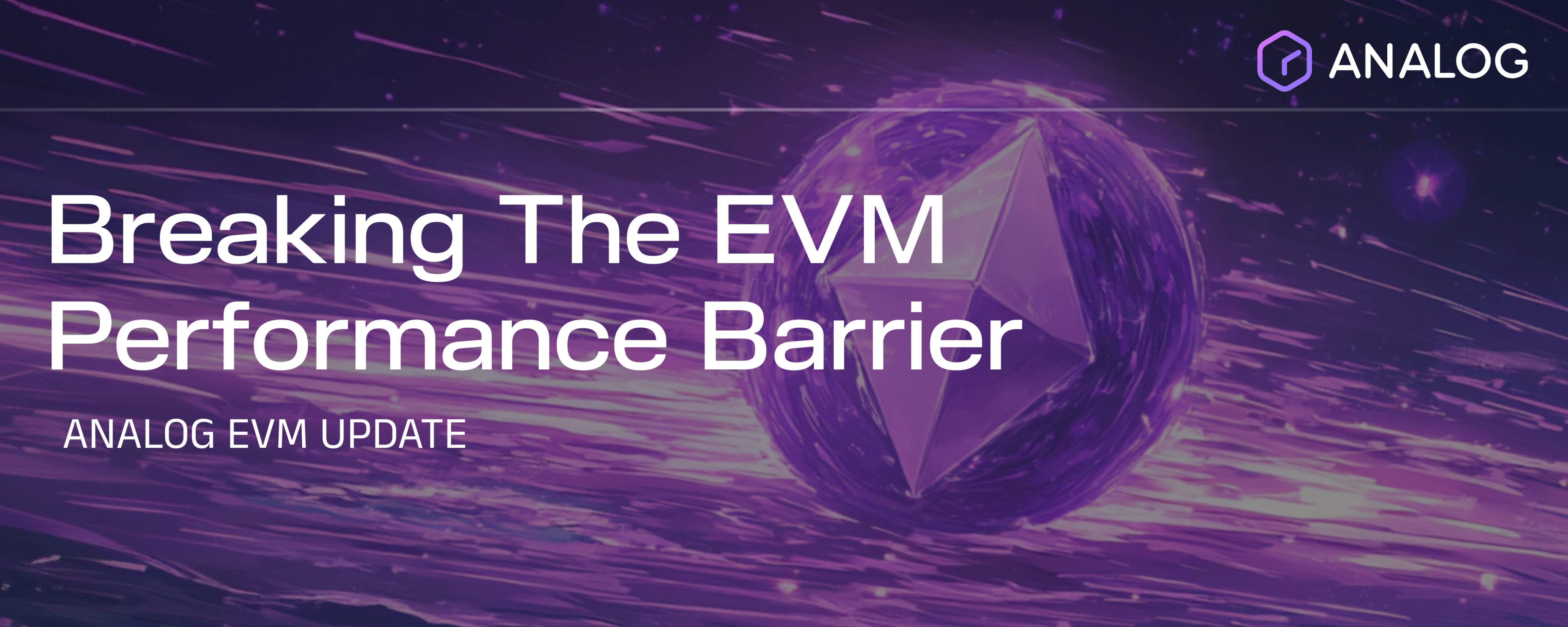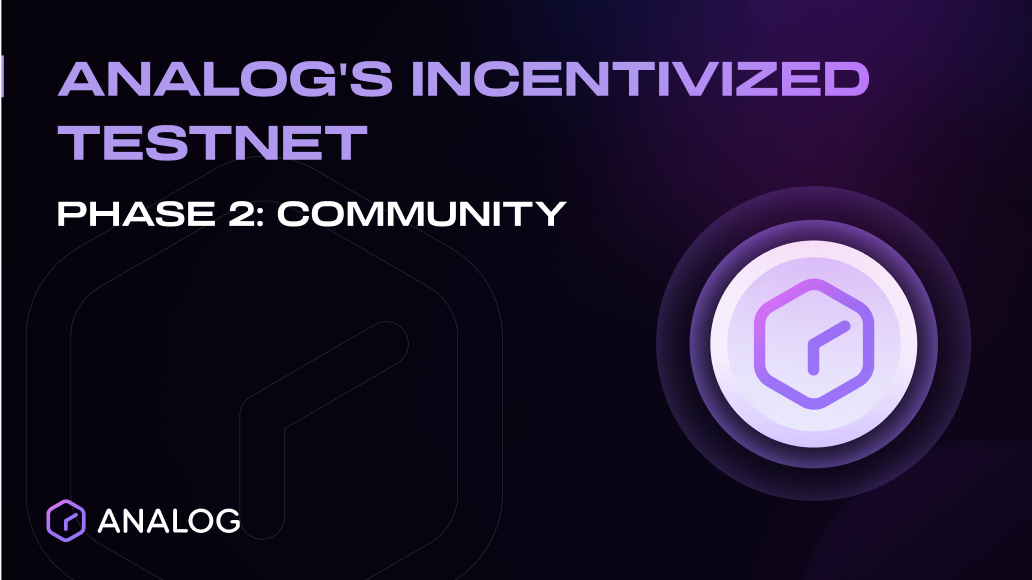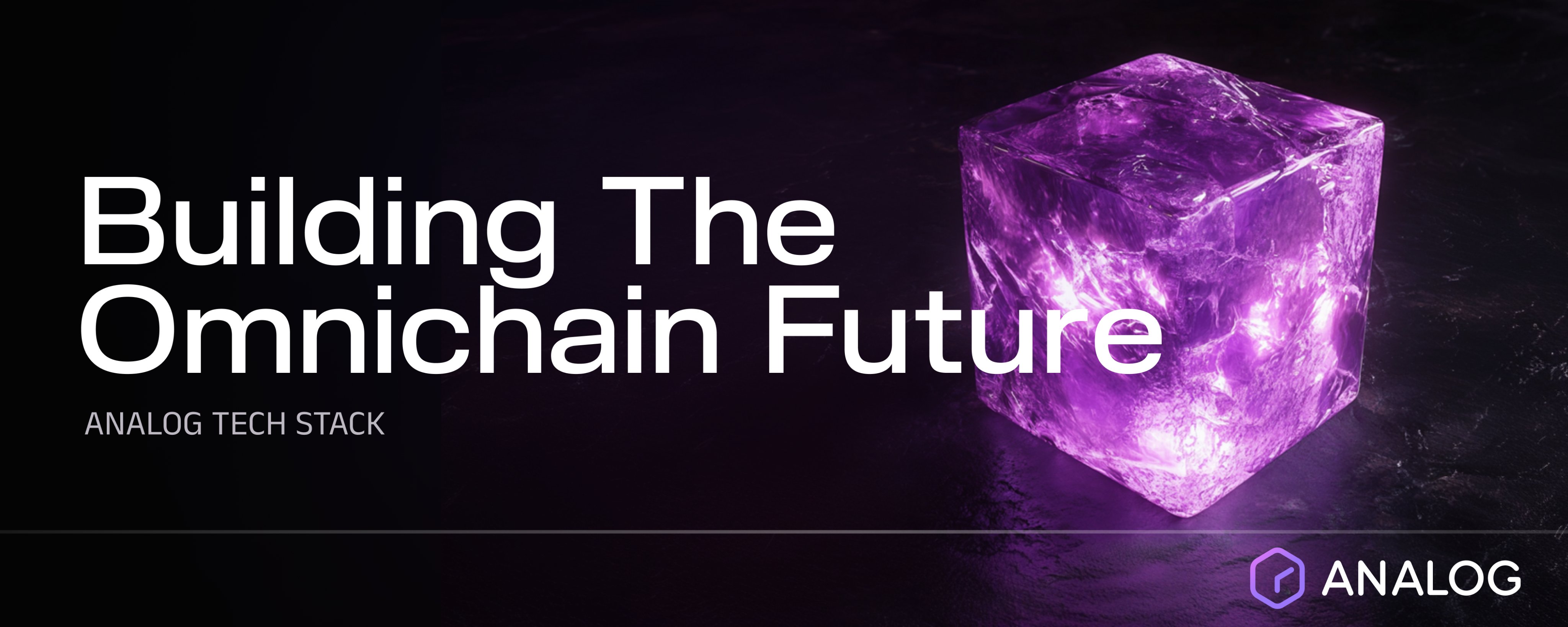
Blockchain platforms have always struggled with the balance between security, compatibility, and performance.
We're excited to share how Analog's integration of PolkaVM technology is redefining these boundaries, achieving near native execution speeds for EVM contracts while maintaining full compatibility with the Ethereum ecosystem.
The Performance Problem with Traditional EVM Implementations
While traditional EVM interpreters are known to be significantly slower than native execution, PolkaVM narrows that gap, running just 1.3–1.7x slower than native in benchmark tests.
This performance gap limits transaction throughput and increases gas costs for users, as computational resources are used much less efficiently than they could be.
Put simply, the EVM was designed for compatibility, not speed so it wastes a ton of compute power doing things modern CPUs aren’t optimized for.
How PolkaVM Bridges the Performance Gap
Instead of reading and executing smart contract instructions line by line like traditional EVMs do, PolkaVM compiles them into fast, low level code that your computer’s processor can run directly. This is what makes it so much faster.
Here’s how we pull it off:
Smarter Compilation (Just-In-Time Recompilation): PolkaVM looks at the contract’s code, figures out all the possible ways it might run, and then compiles it into a version that’s way more efficient. It finds shortcuts, combines repeated steps, and organizes memory usage in a way that modern CPUs can process effortlessly.
Performance That Improves As You Go: Instead of compiling everything upfront, PolkaVM keeps an eye on how the contract runs. If it sees the same pieces being used over and over, it fine tunes those sections to run even faster while the program is still executing.
Built in Boosts for Common Tasks: We’ve also added some custom speed ups for things smart contracts do all the time like math, reading and writing to storage, and running cryptographic functions. These are optimized to run as fast as possible on the hardware.
Benchmark Results: A Performance Revolution
Our performance benchmarks back up what we’ve built.
PolkaVM runs smart contracts just 1.68x slower than native code, a massive leap forward when compared to traditional EVM interpreters, which typically run 5-10x slower than PolkaVM.
This means PolkaVM gets you within striking distance of native performance, while still delivering full Ethereum compatibility, something very few EVM implementations can claim.
What Actually Matters
Analog’s PolkaVM isn’t just another EVM, it's a breakthrough in performance, cost efficiency, and developer experience. Here’s why:
Near-Native Performance: Analog’s EVM, powered by PolkaVM, runs smart contracts up to 10x faster than standard EVMs. This is the closest performance to running code directly on hardware, without giving up compatibility.
Massive Gains in Throughput & Cost: Faster execution means lower gas fees and more transactions per block. That directly translates to better user experience and scalable dApps.
Complete Ethereum Compatibility: Developers don’t need to relearn anything. PolkaVM works with existing Ethereum tools and smart contracts out of the box.
Built for Adoption: The faster the contracts, the smoother the UX. That’s what attracts real builders and real users.
We’re delivering the fastest EVM execution on the market, without compromising on compatibility or developer tooling.
Looking Ahead: The Technical Roadmap
This performance breakthrough is just the beginning of our technical innovation journey. We’re building toward a future where developers can do more with EVM than ever before by unlocking features unique to Analog that simply aren’t possible on other chains.
Our goal with this play is to open the door to an entirely new class of omnichain dApps by making powerful Timechain native capabilities easily accessible from within smart contracts on EVM.
Let’s build Timekeepers.










